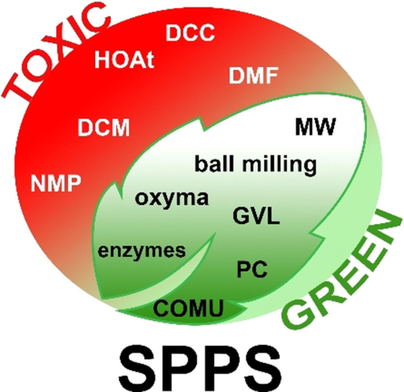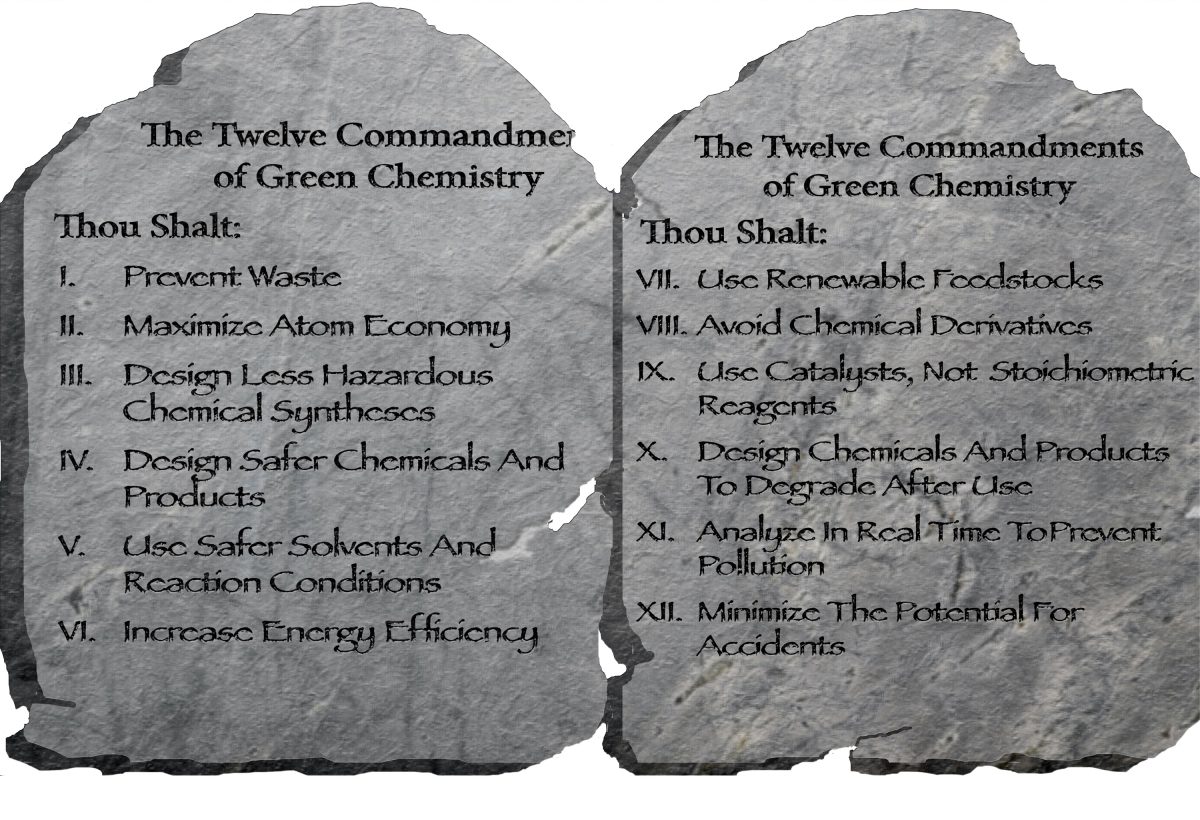The Commandments of Green Chemistry
Our latest blog series is designed to guide peptide chemists towards a greener, more sustainable laboratory. Each of our blog entries (or sermons, if you will) will delve into one principle. If you missed a previous one, they are found here.
Fifth Commandment: Safer Solvents and Auxiliaries
The use of auxiliary substances (e.g., solvents, separation agents, etc.) should be made unnecessary wherever possible and innocuous when used.
After a bit of a “pass” granted from issues outlined in the previous commandment, this principle’s objective and the outcome of green(er) peptide synthesis are undoubtedly within the abilities of most chemists.
A Crucial “How-to” Commandment
As we have in previous entries, we refer to the American Chemistry Society’s site, which is where all of the commandments are set forth.”1
In the first blog post for this series, Berkley Cue stated that the first principle is the most important, and the rest are “how-to.”1 Close readers have also noticed that solvents play an outsized role in that greener how-to and “account for 50 – 80 percent of the mass in a standard batch chemical operation, depending on whether you include water or you don’t. Moreover, solvents account for about 75% of the cumulative life cycle environmental impacts of a standard batch chemical operation.”1 This principle addresses alternative solvents and auxiliaries.
Fortunately, in contrast to the lack of guidance with the previous principle, there is quite a bit of literature for safer solvents. One article, “Making Solid-Phase Peptide Synthesis Greener: A Review of the Literature,” is an excellent place to start. The illustration for their abstract is a nice summation as well. 2

Another article, “Greening Fmoc/tBu Solid-Phase Peptide Synthesis,” that reviews alternatives to DMF, NMP, and CH2Cl2, is by the estimable team of Othman Al Musaimi, Beatriz G. de la Torre, and Fernando Albericio. We can heartily endorse their conclusion “that in many cases green solvents do not impair the synthetic process and that their adoption in current synthetic schemes will be translated into a smaller impact on the environment and on human health.”2
An additional “solvent swap” article worth studying, is “N-Butylpyrrolidinone For Solid-Phase Peptide Synthesis Is Environmentally Friendlier and Synthetically Better Than DMF.”3
Trading Impacts
These are just a few of the dozens of articles that aid in fulfilling this commandment. Depending on your current less-green solvent of choice, a search of the existing literature will be the first place to look for your solvent swap solution.
We conclude with another quote from Dr. Concepcíon (Conchita) Jiménez-González, Director, Operational Sustainability, GlaxoSmithKline on the ACS 12 Principles site that encapsulates your alternatives:
“We will always need solvents, and with many things in chemical processes, it’s a matter of impact trading. Optimize a solvent according to one green metric, and many times, there are three others that don’t look so good. The object is to choose solvents that make sense chemically, reduce the energy requirements, have the least toxicity, have the fewest life cycle environmental impacts, and don’t have major safety impacts.”1
References
- https://www.acs.org/content/acs/en/greenchemistry/principles/12-principles-of-green-chemistry.html
- https://doi.org/10.1002/asia.201801807
- http://dx.doi.org/10.1002/cssc.202001647
Resources

